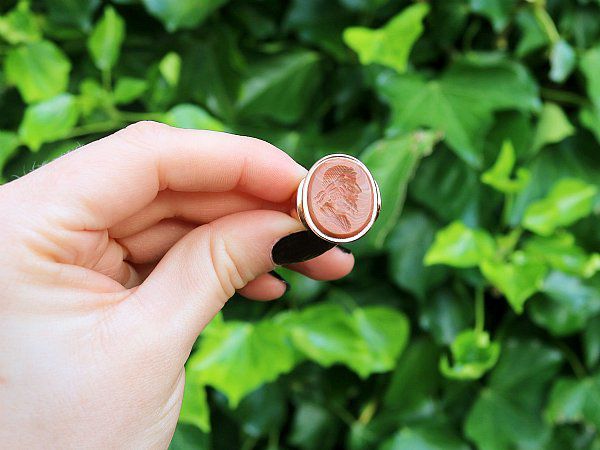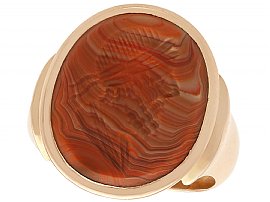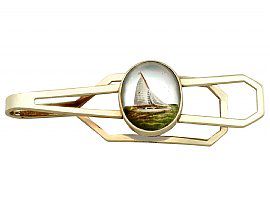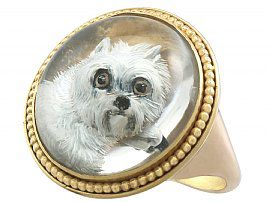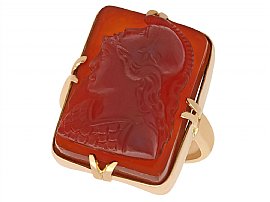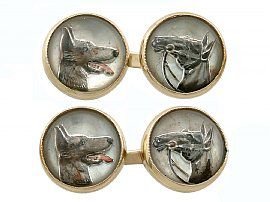What Is Intaglio Jewellery?
Jewellery is an innate part of human existence; a practise unique to our species. Carving materials like bone and gemstones in order to ornament oneself has been done for many millennia.
There are two main strands of engraved jewellery: cameo and intaglio. The two distinct styles are most easily distinguished by how the carving is done. Cameo jewellery is carved to create a raised pattern, usually using hard materials like shell, hardstone, and agate. Intaglio jewellery is carved to create a recessed image, with a concave surface.
Intaglio jewellery is often worn one of two ways; either with the engraved surface facing outwards, or with the smooth surface facing outwards, having the effect of an image held in place within the static of the material.
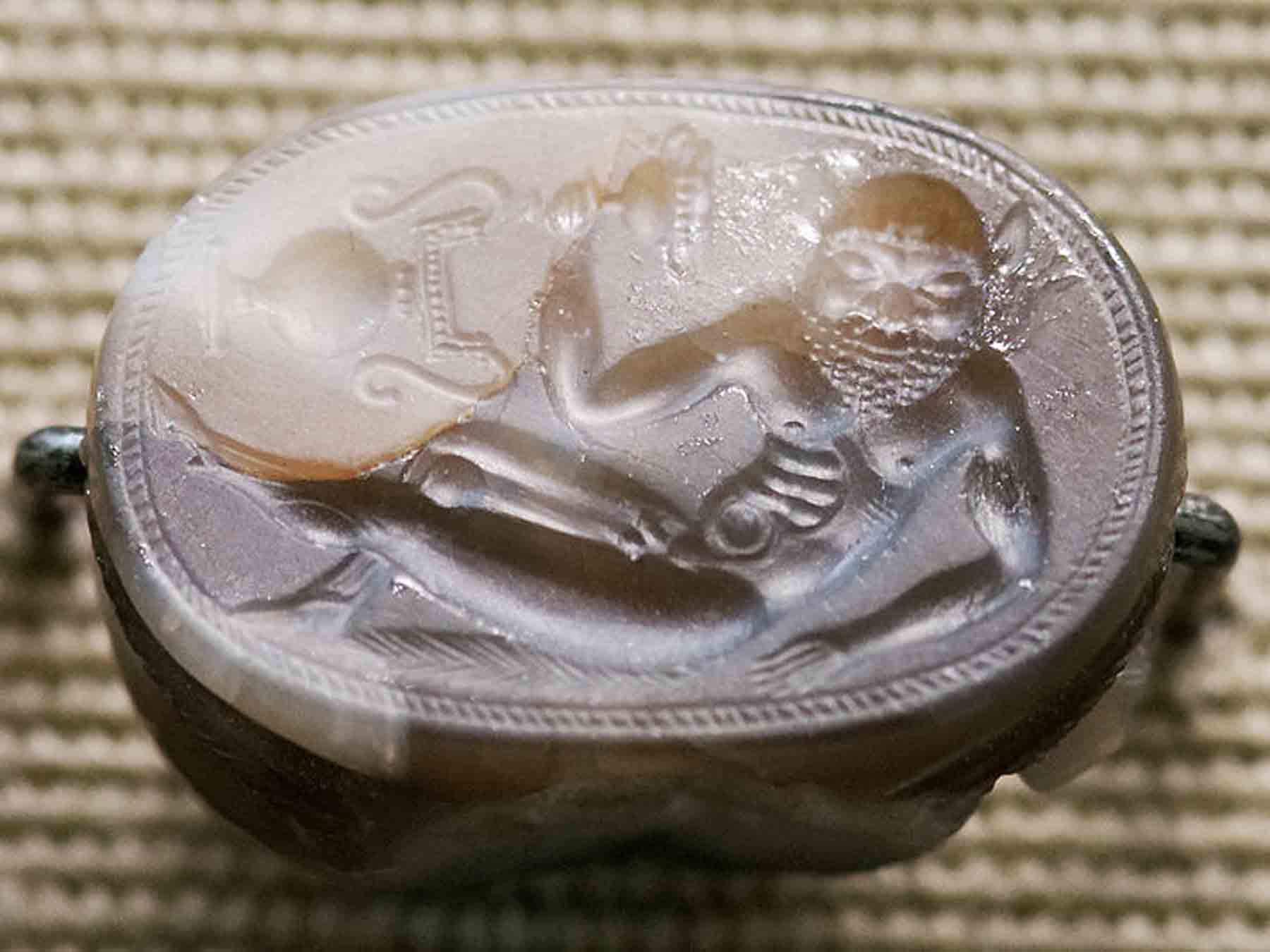 British Museum, Public domain, via Wikimedia Commons
British Museum, Public domain, via Wikimedia Commons The History of Intaglio Jewellery
Intaglio jewellery and signet rings are closely-linked categories of jewellery. Historically, the reason that intaglios were carved was to be set in rings that were then used for seals. Very intricate designed, intaglios were difficult to create and this made them highly valuable pieces of jewellery, worn only by very wealthy and important men. The most valued intaglio jewellery pieces were made with highly ornate and delicate features.
The 18th century saw a huge increase of interest in Ancient Roman jewellery, with a Neo-classical revival that involved faithful reproductions of jewellery pieces like cameos and intaglios. Despite the many centuries between the original Intaglios and the later designs, the methods of creating the pieces remained mostly the same.
Through the Victorian period, cameos became more popular jewellery pieces, leading to a decline in the use and creation of intaglio jewellery. By the mid-1800s, postage stamps were widely used, meaning that wax seals were defunct, and intaglio designs became a relic of the past. In recent years, an interest in intaglio jewellery has re-emerged, as the complex craftsmanship involved is finding new appreciation.
The Meaning of Intaglio Jewellery
As is the case with a lot of jewellery categories, there is no one specific meaning to intaglio jewellery. Instead, the jewellery itself – often rings – is a symbol of power and status. In the Ancient Roman Empire, owning an intaglio ring, whether commissioned or inherited, was a sign of one’s wealth and power.
Their main use being to act as seals with hot wax, intaglio rings were designed out of both practicality and beauty. Anyone who owned and used an intaglio saw it as a valuable tool – quite literally their seal of office. Gemstones were prized in ancient civilisations in the same way that they are today. An intaglio ring was usually made with a very hard gemstone, as softer gemstones made it difficult to create an intricate design that would make a clear seal.
Today, intaglio jewellery is still seen as a status symbol, largely because of their age and provenance. Whether the piece owned is a Victorian reproduction, a newer creation that takes inspiration from the ancient designs, or a genuine ancient relic, intaglio jewellery is still an emblem that represents power and wealth.
